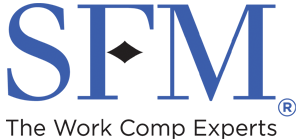It’s not hard to find a story on prescription drugs in the headlines.
Maybe you’ve seen news reports on topics such as:
- Prescription drug abuse, which has reached epidemic proportions
- Arguments of overmedication and the push for non-pharmaceutical or non-narcotic alternatives
- Lack of affordability, with pricing increases far outpacing inflation
These issues and many more can come into play when prescription drugs are needed to treat work injuries.
That’s why SFM works hard to make sure injured employees’ medications are managed well. As part of that effort, we partner with pharmacy benefits manager, myMatrixx .
myMatrixx negotiates pricing for prescription drugs and monitors whether comparable, lower-cost drugs might be available. But its services go beyond cost savings. SFM and myMatrixx work together to see that injured employees are getting the best prescription drug treatments for their injuries and aren’t being put at risk for addiction or dangerous interactions.
The safety of our injured employees is critical.
As a pharmacy benefits manager, myMatrixx acts as an intermediary between SFM and pharmacies, negotiating and paying for medications needed to treat work injuries and connecting the appropriate representative when the medications require approval.
myMatrixx has pharmacists on staff who work together with SFM’s medical experts.
How does SFM ensure injured workers are getting safe and effective prescription medications?
myMatrixx provides SFM with reports that give us the opportunity to monitor injured employees’ prescriptions. This allows us to address dangerous combinations of drugs, prescriptions that are higher or lower than recommended doses of medications, and ineffective treatments for injuries.
For example, in one case an employee complained that his prescription drug wasn’t helping him. SFM discovered he wasn’t taking a high enough dosage for it to work.
If there is any concern about a drug(s), SFM can send a letter to the employee’s doctor. Optimal, safe and appropriate medication management is our goal.
How do SFM and myMatrixx control prescription drug costs?
The cost of prescription drugs in the U.S. increased 15.2 percent from 2022 to 2023, according to an October 2023 report from the U.S. Department of Health and Human Services. In fact, more than 4,200 drug products saw price increases.
However, it should be noted that the Inflation Reduction Act, passed in 2023, has a provision aimed at lowering prescription drug costs.
Still, prescription drug spending increased 8.4 percent to $405.9 billion in 2022, according to the Centers for Medicare and Medicaid Services .
Costs for individual drugs can vary widely, sometimes for no obvious reason. Here are a few examples of surprising variations in prescription drug pricing:
- When a manufacturer changed its pricing in January 2023, one drug’s cost went up 3,000 percent
- Some drugs can vary from $15 per dose to more than $140 at pharmacies within a single ZIP code
- A generic medicine could cost $7 or $393 depending on where it was purchased
The world of prescription drug pricing can be complicated at best and downright baffling at worst.
This is why working with a pharmacy benefits manager is so important.
myMatrixx negotiates with its network of 65,000 pharmacies on drug pricing and monitors prescriptions to identify whether identical or comparable drugs might be available at lower prices.
What is SFM doing to prevent opioid addiction?
One major reason prescription drugs have been getting so much attention recently is the sharp increase in prescription painkiller addiction as well as other medications and/or concerning combinations of medications, both legal and illegal.
SFM helps prevent addictions and advocates for weaning patients off the drugs, or at least getting them to a safer dosage.
Company officials send letters to treating physicians of injured employees who’ve been prescribed high doses of opioid painkillers or other drugs of concern, asking them to develop plans to wean the patients off of the drugs. With increased awareness of the dangers of opioids as well as other prescription medications/combinations and the concerns for prescription use disorder or addiction, more and more doctors are complying.
According to CDC, chronic pain is a pervasive health condition affecting as many as one in five adults and nearly one-quarter of them have used a prescription opioid in the past 3 months and this is associated with increased risk for misuse, addiction, morbidity and mortality.
In some cases, injured employees themselves request to be weaned off the drugs due to safety concerns after seeing the letters outlining the risks.
Sometimes, simply tapering down the medication over time isn’t a safe option. In cases of long-term, high-dose opioid use, other dangerous drug combinations, or both, SFM has sent injured employees to rehabilitation programs. These programs focus on non-medication pain management treatment/alternatives as they help people stop using their opioid painkillers.
Overall, SFM has been successful in helping many of our injured employees taking opioids or other prescription drugs discontinue use or decrease to a safer dosage.
Originally published November 2021; updated January 2024.

